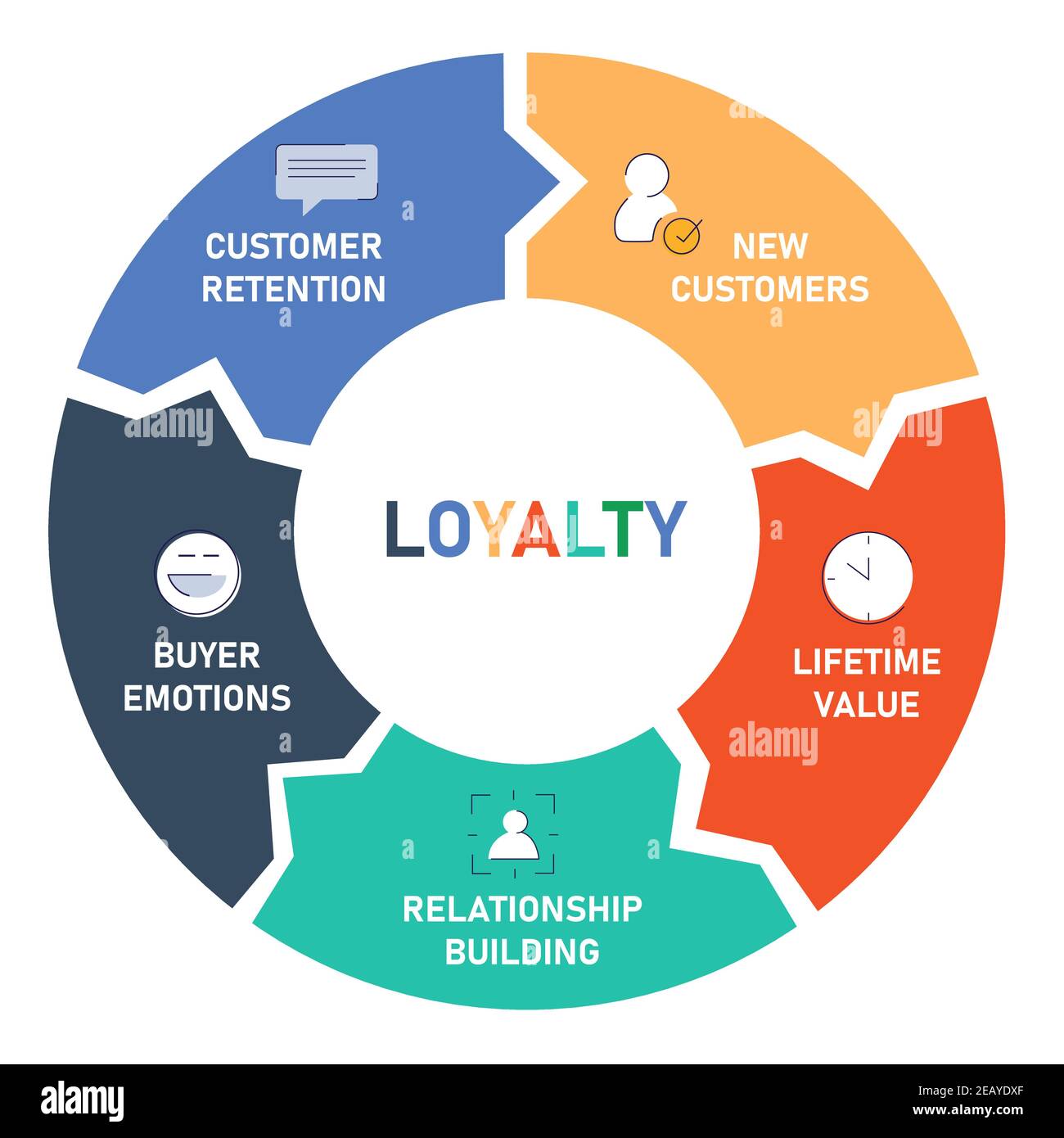In today’s fast-paced and ever-evolving business world, companies face mounting pressure not only to achieve profitability but to resonate with a deeper purpose. The foundation of this purpose is built upon guiding values. These values are not merely decorative statements framed on office walls—they are the living, breathing principles that shape every action, decision, and relationship within a business. As organizations strive to differentiate themselves and foster loyalty, guiding values emerge as the critical compass steering them toward meaningful and sustainable success.
Table of Contents
- Why Guiding Values Matter More Than Ever
- Learning from Disruption: Values as a Steadfast Compass
- Aligning Leadership and Teams
- Engaging the Modern Workforce
- Shaping Customer Perceptions and Loyalty
- Beyond Internal Impact: Strengthening External Relationships
- Putting Guiding Values Into Action
- Adapting to Change Without Losing Core Principles
- Transparency and Accountability
- Startups and Small Businesses: Values from Day One
- Guiding Values and Social Responsibility
- Future-Proofing with Guiding Principles
- Fostering Resilience and Building Legacies
- Conclusion: Leading with Purpose
Why Guiding Values Matter More Than Ever
The Compass in a Complex World
At the heart of every thriving business lies a clear sense of direction. In today’s fast-paced, ever-changing landscape, this direction is not just a nice-to-have—it’s essential. Guiding values act as the compass by which organizations navigate complexity, uncertainty, and constant disruption. They serve as the bedrock for decision-making, helping leaders steer their teams through both calm and turbulent waters.
Shaping Leadership and Vision
Guiding values shape how leaders lead. They are not mere slogans printed on walls or featured in glossy brochures. Instead, they inform daily choices, strategic pivots, and crisis responses. Leaders grounded in clear values inspire trust and loyalty among employees, stakeholders, and customers. They also cultivate resilience—essential for adapting to change without compromising integrity.
Fueling Collaboration and Team Cohesion
Values are the invisible threads that weave teams together. When team members share an understanding of what truly matters, collaboration flourishes. Employees align not just around goals but also around the manner in which those goals are achieved. This shared framework minimizes conflict, enhances communication, and empowers diverse teams to work as unified forces.
Elevating Customer Relationships
Customers are increasingly drawn to brands that stand for something beyond profit. Guiding values influence how companies engage with their audiences—whether through authentic marketing, transparent policies, or meaningful corporate social responsibility efforts. When customers see that a brand’s actions consistently reflect its stated values, trust deepens, loyalty strengthens, and advocacy grows.
Sustaining Long-Term Vision
Without guiding principles, even the most promising businesses risk drifting into disarray. In the pursuit of short-term gains, they may sacrifice the very vision that once set them apart. Values provide the continuity needed to maintain a long-term perspective. They help organizations resist the temptation of fleeting trends and focus on sustainable growth, innovation, and purpose-driven success.
A Competitive Differentiator
In crowded markets where products and services can be easily replicated, values become a key differentiator. Companies that lead with authenticity and uphold their values consistently carve out unique identities. These businesses not only attract top talent and loyal customers but also build reputations that can withstand economic shifts and industry changes.
Learning from Disruption: Values as a Steadfast Compass
The importance of guiding values became especially apparent during times of global disruption. Whether grappling with economic uncertainty, societal shifts, or technological upheaval, businesses that anchored themselves in steadfast guiding beliefs were better equipped to adapt and endure. These values served as a touchstone—a reminder of why the business exists beyond just making money.
Aligning Leadership and Teams
Cultivating a purpose-driven culture starts with introspection. Leaders must ask themselves what truly matters to the organization and what guiding ideals will drive decisions both big and small. This is not a one-time exercise. Instead, it’s a continual process of reflection, adaptation, and reaffirmation. When a company’s guiding values align with the aspirations and motivations of its employees, magic happens. People feel a greater sense of belonging, loyalty strengthens, and innovation flourishes.
Engaging the Modern Workforce
Consider the influence of guiding values on employee engagement. Modern workers, especially younger generations, are no longer satisfied with clocking in and out for a paycheck. They crave purpose and want to be part of something bigger than themselves. By embedding guiding values into daily operations, businesses offer employees a chance to connect their work to a larger mission. This not only boosts morale but reduces turnover and attracts top talent who are eager to contribute to a value-driven enterprise.
Shaping Customer Perceptions and Loyalty

Moreover, guiding values are instrumental in shaping customer perceptions. In an age where consumers have endless choices, purchasing decisions are increasingly influenced by a brand’s principles. Companies that stand for transparency, sustainability, inclusivity, or other guiding ideals often cultivate deeper emotional bonds with their audience. These connections translate into customer loyalty, positive word-of-mouth, and ultimately, business growth.
Beyond Internal Impact: Strengthening External Relationships
The influence of guiding principles extends beyond internal and customer relationships. They also play a pivotal role in partnerships, investor relations, and community involvement. When stakeholders understand and believe in a company’s guiding values, trust is established. This trust becomes the currency of successful collaborations and long-term alliances.
Putting Guiding Values Into Action
Defining guiding values is just the starting point. The real transformation occurs when these principles are embedded into the everyday fabric of a company’s culture. Turning values into behavior demands intention, leadership, and systemic reinforcement.
Leadership as the First Line of Practice
Leaders are the primary stewards of an organization’s values. When executives and managers consistently model the guiding principles they preach, they establish credibility and trust. Whether it’s through transparent communication, ethical decision-making, or showing empathy in times of pressure, leadership behavior sets the tone for the rest of the organization. When values are visible at the top, they are more likely to be embraced throughout.
Building Values Into Organizational Infrastructure
Values should not be confined to posters or corporate handbooks—they must be embedded in how the organization operates. This includes aligning hiring practices with core values, structuring onboarding to emphasize cultural fit, and shaping workplace policies that support ethical and inclusive behavior. Incentive systems, disciplinary protocols, and internal communications must also reflect and reinforce these principles.
Empowering Employees to Act on Values
True cultural alignment occurs when employees at every level are not just aware of guiding values—but feel confident in applying them. This requires psychological safety, clear role expectations, and the authority to make decisions in alignment with company values. For instance, if “integrity” is a stated value, employees must feel secure speaking up against unethical behavior without fear of retaliation.
Recognizing and Rewarding Values-Driven Behavior
To solidify values as behavior drivers, organizations should intentionally recognize individuals and teams who embody them. Whether through formal awards, performance evaluations, peer-nominated shout-outs, or promotion criteria, celebrating actions that reflect core values sends a powerful signal. It encourages repetition of those behaviors and shows that values are not abstract—they are rewarded and respected.
From Concept to Culture
When guiding values are continuously reinforced across communication, performance, decision-making, and recognition, they stop being theoretical. They evolve into a living culture—a shared language that informs every interaction and business choice. Over time, this alignment not only strengthens internal cohesion but becomes a visible differentiator to customers, partners, and stakeholders alike.
Adapting to Change Without Losing Core Principles
It’s also essential for businesses to remain adaptable. While core guiding values provide stability, how they manifest might evolve over time. For example, a commitment to innovation might initially focus on product development but later expand into sustainability initiatives or community projects. The flexibility to interpret and apply guiding values in new contexts ensures they remain relevant and impactful.
Transparency and Accountability
Transparency is key in this journey. When mistakes occur—and they inevitably will—organizations should acknowledge them and demonstrate how their guiding principles will inform corrective actions. This openness not only preserves credibility but reinforces the authenticity of the company’s commitment to its values.
Startups and Small Businesses: Values from Day One
Some skeptics argue that emphasizing guiding values is a luxury reserved for well-established or financially secure companies. In reality, even startups and small businesses can benefit immensely from establishing a values-based culture from day one. Clear guiding principles provide a roadmap through the uncertainty and ambiguity that often characterize early-stage ventures. They help prioritize decisions, allocate resources wisely, and maintain focus amid competing demands.
Guiding Values and Social Responsibility
According to statistics, Guiding Values are a documented set of principles that program staff rely on to direct their daily activities.
Additionally, businesses that embrace purpose-driven guiding values are often better positioned to contribute positively to society. Whether addressing environmental challenges, supporting social causes, or championing ethical labor practices, these companies prove that profitability and social responsibility are not mutually exclusive. On the contrary, they can reinforce each other, creating a virtuous cycle of success.
Future-Proofing with Guiding Principles
As the future of work continues to unfold, the role of guiding values will only grow in significance. Trends such as remote work, artificial intelligence, and shifting consumer expectations require businesses to be agile yet anchored. In this landscape, guiding principles provide the cohesion and clarity needed to navigate complexity and seize new opportunities.
Fostering Resilience and Building Legacies

Moreover, a purpose-driven culture rooted in strong guiding beliefs fosters resilience. Teams united by shared values are better equipped to weather challenges, embrace change, and support each other through adversity. They are not just working for a paycheck but for a cause that resonates deeply.
The impact of guiding values is not limited to the present moment. They shape legacies. Companies that prioritize purpose leave lasting impressions on their industries, their communities, and even the broader culture. From pioneering innovation to championing social justice, businesses grounded in solid guiding values often inspire others to follow suit, amplifying their influence far beyond their immediate sphere.
Conclusion: Leading with Purpose
Crafting a purpose-driven business culture is both an art and a science. It demands clarity, consistency, and courage. By identifying and living out their guiding values, businesses can achieve more than financial success—they can create environments where people thrive, ideas flourish, and positive change takes root. As the business landscape continues to evolve, let these guiding principles serve not just as a compass but as a beacon, illuminating the path toward a more meaningful and impactful future.
